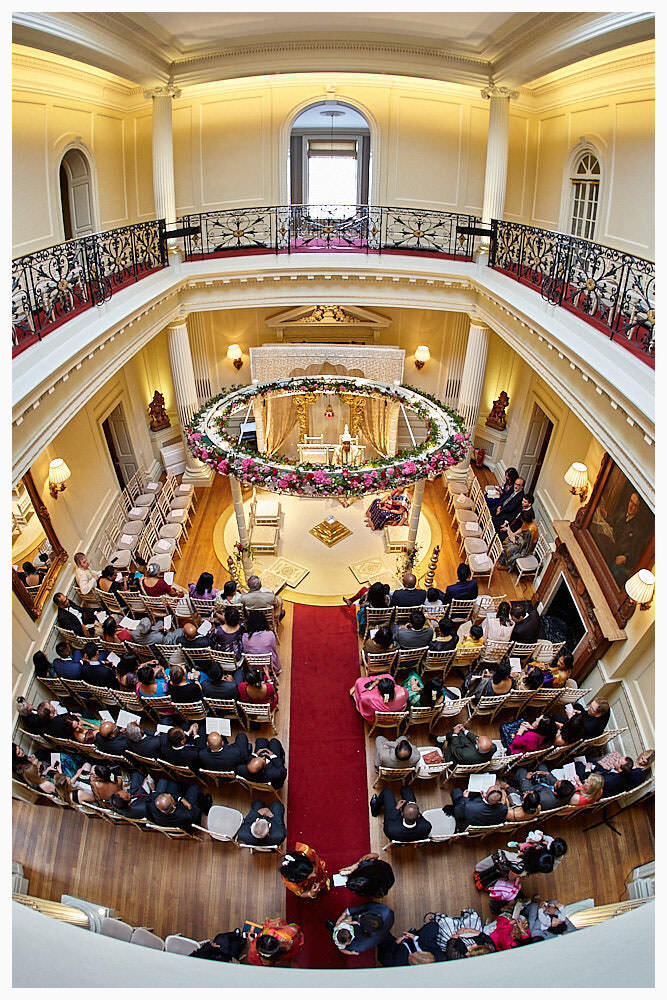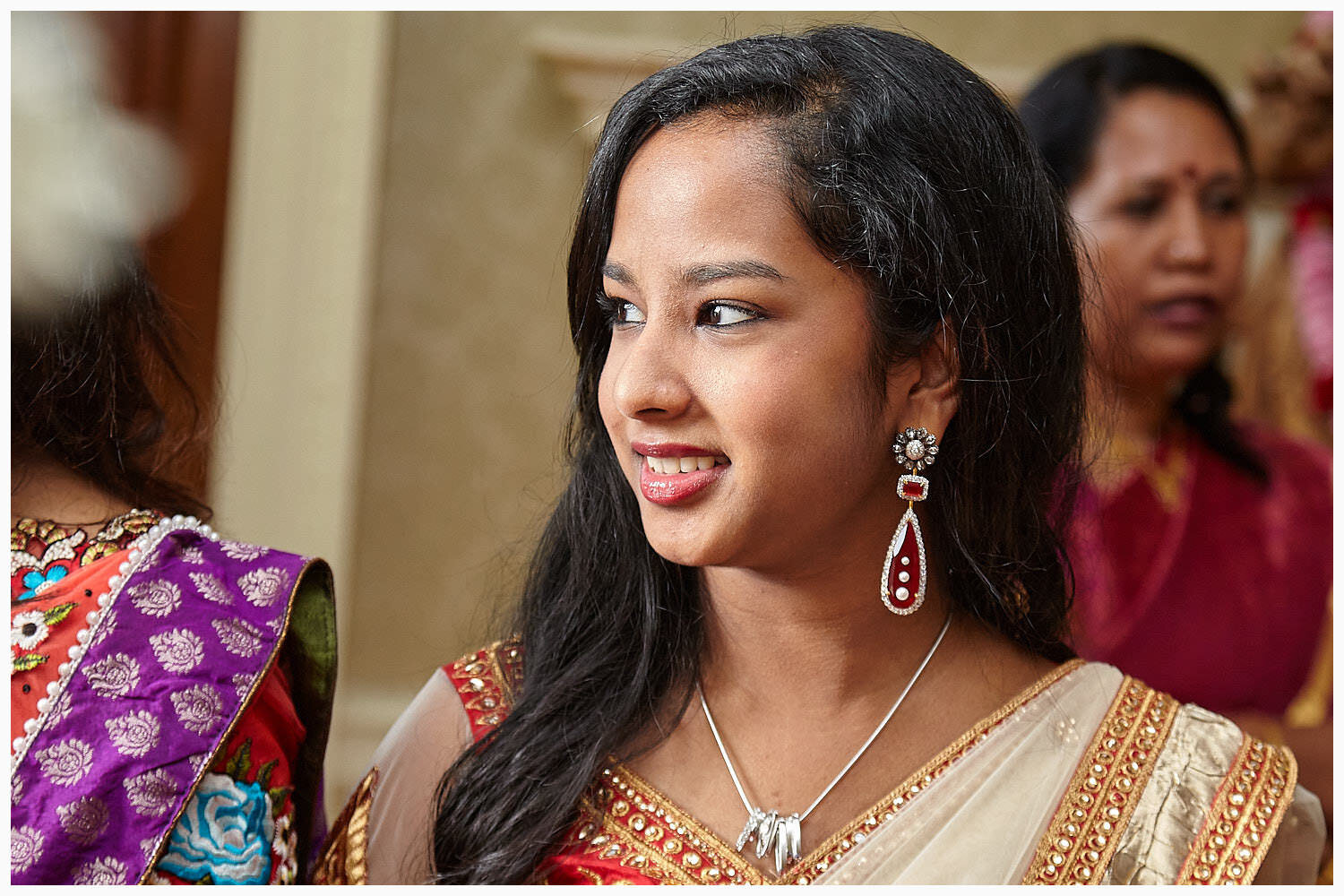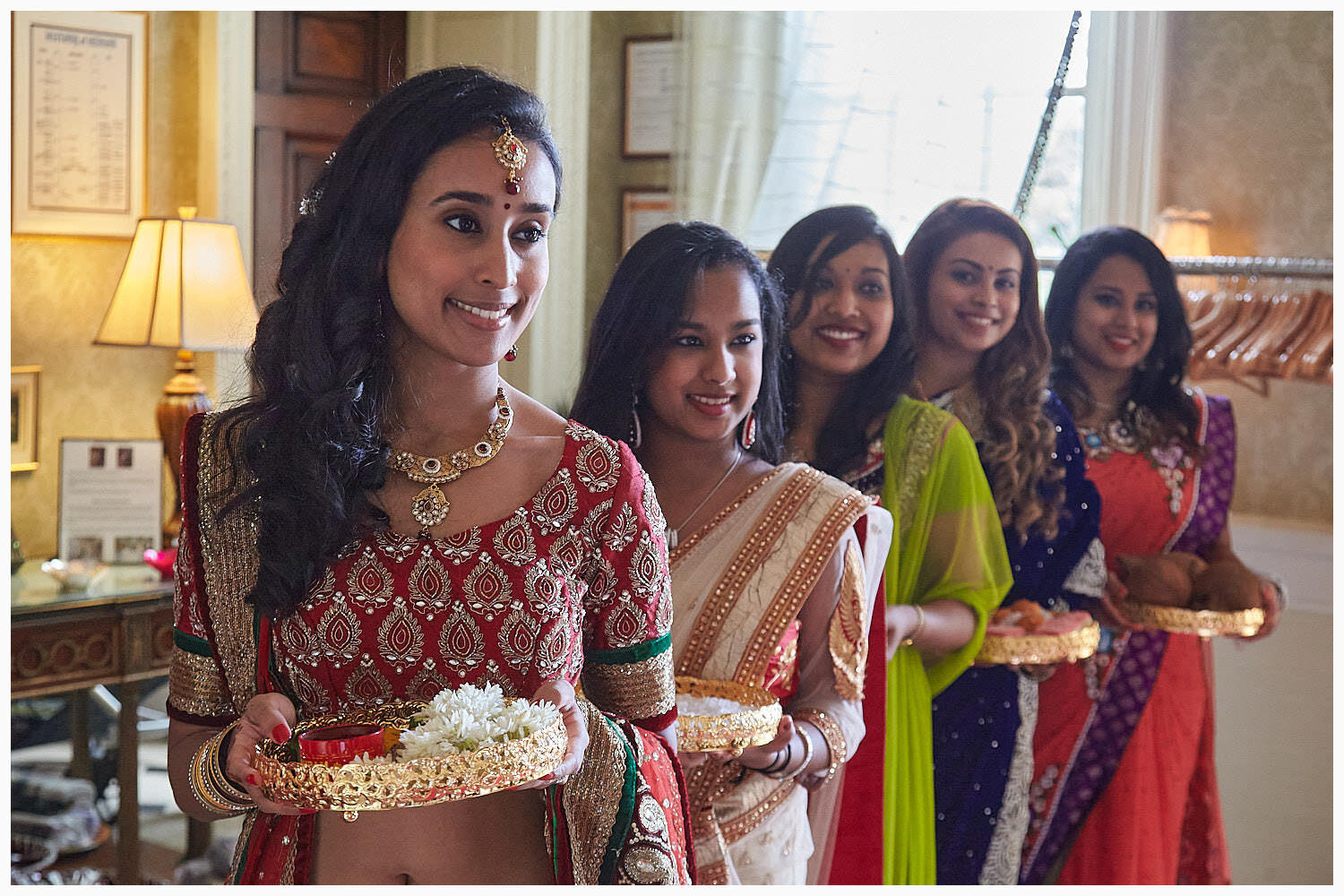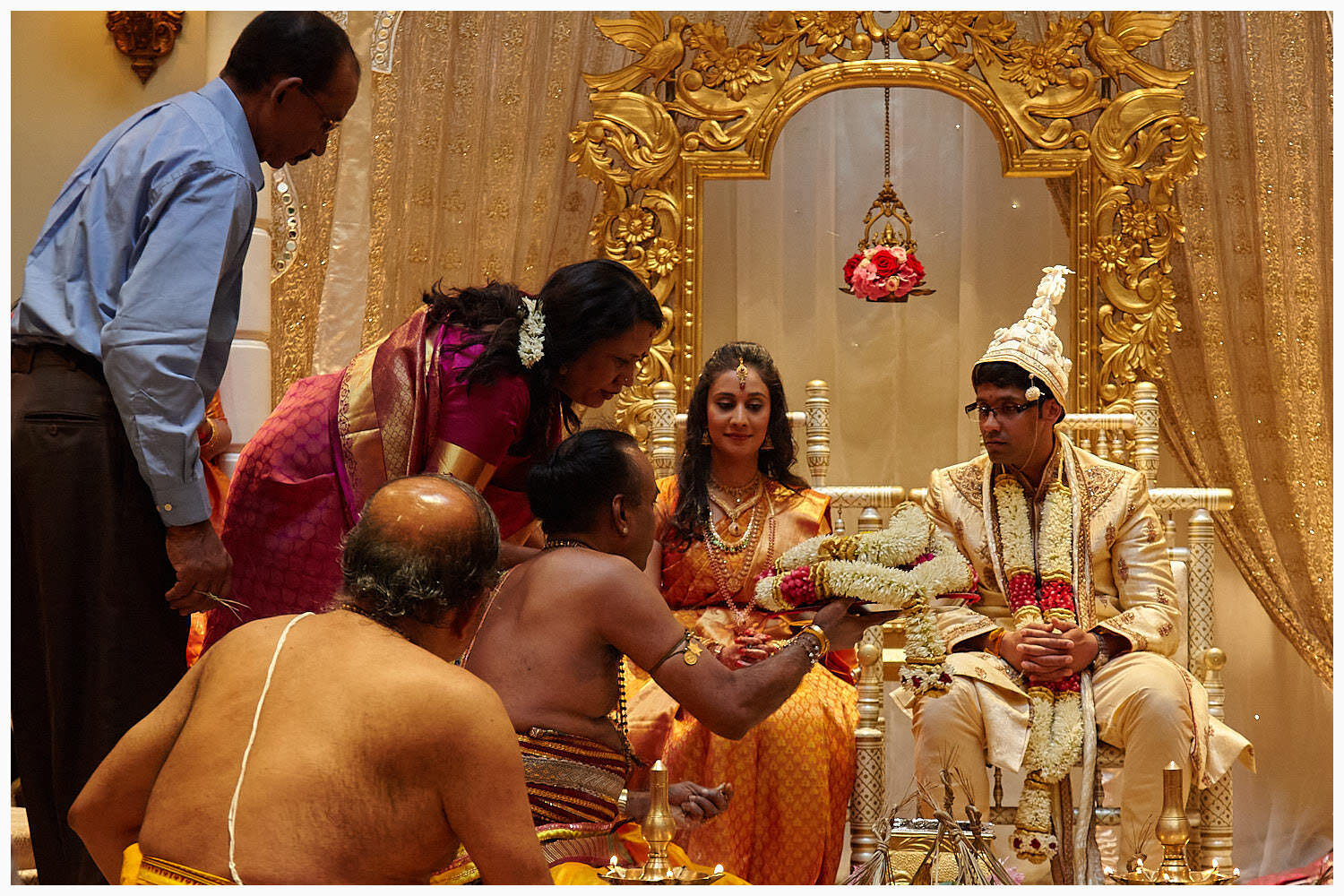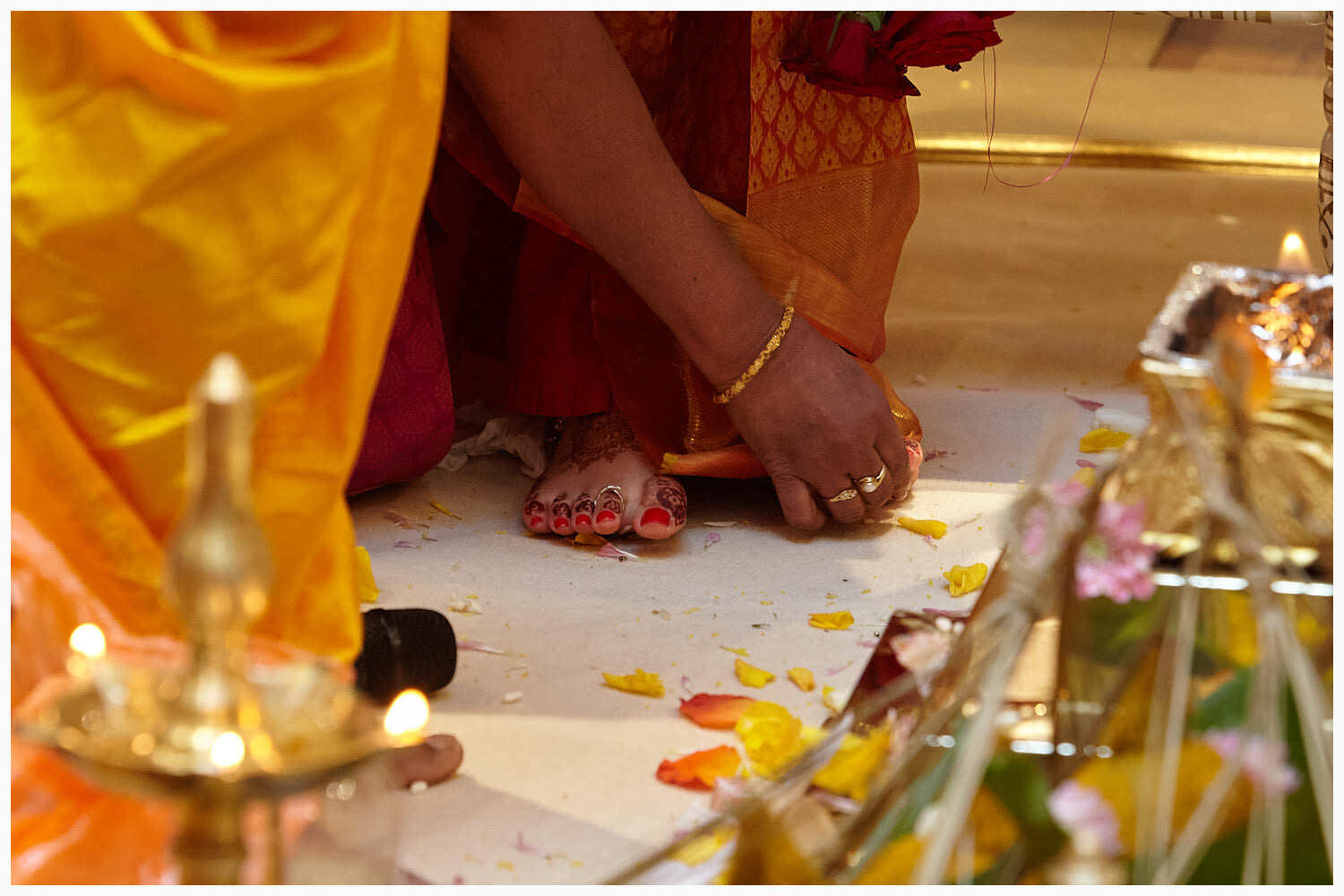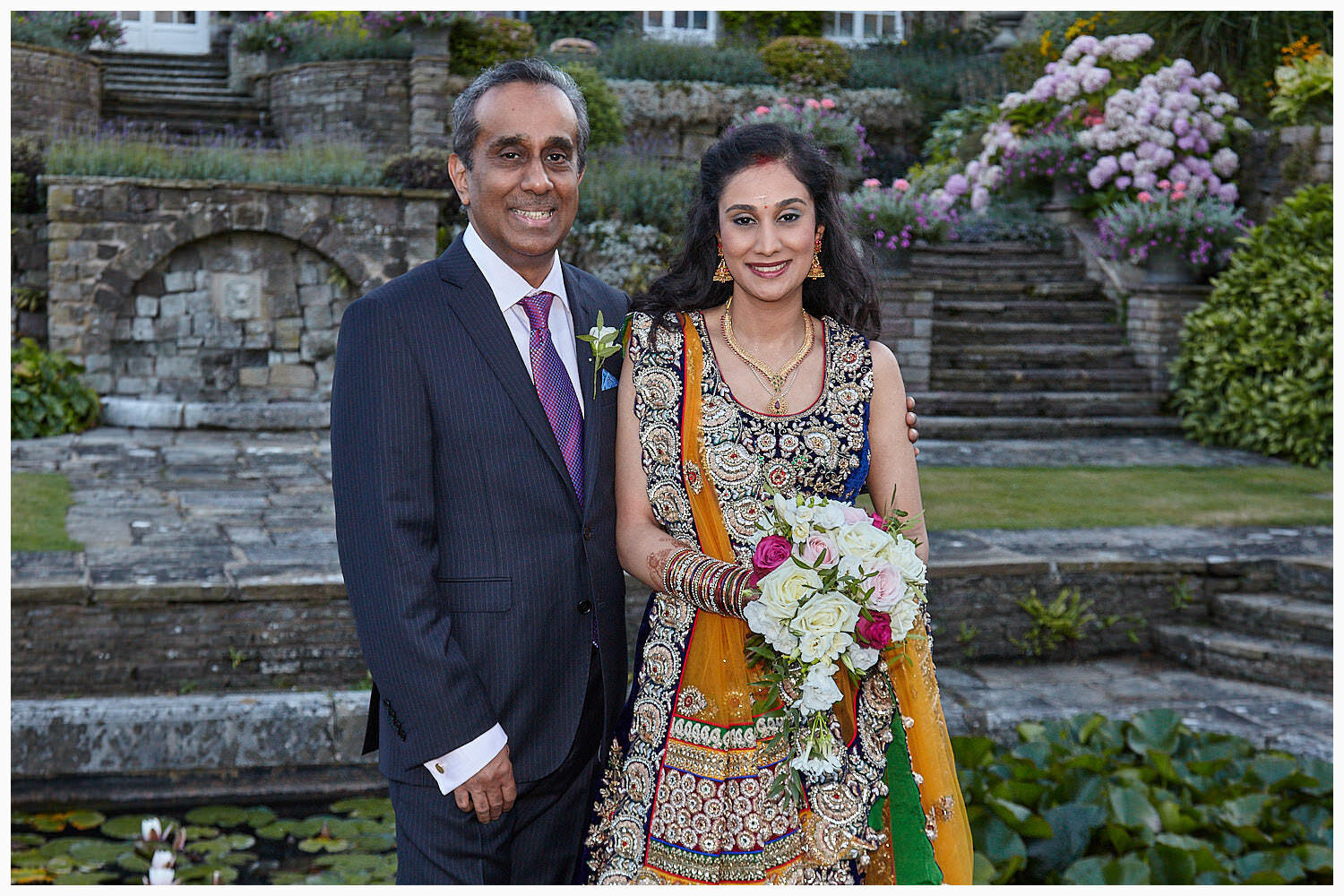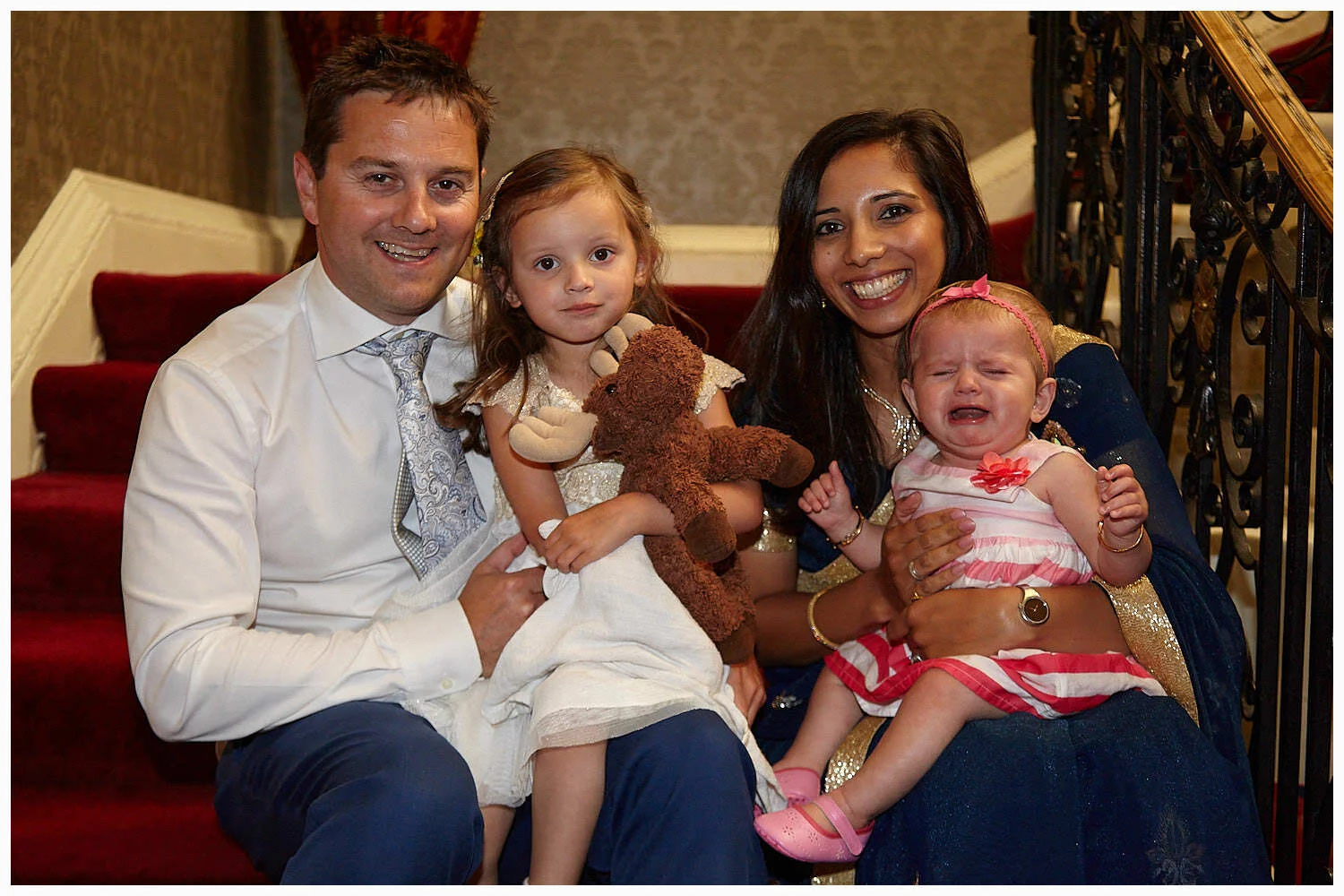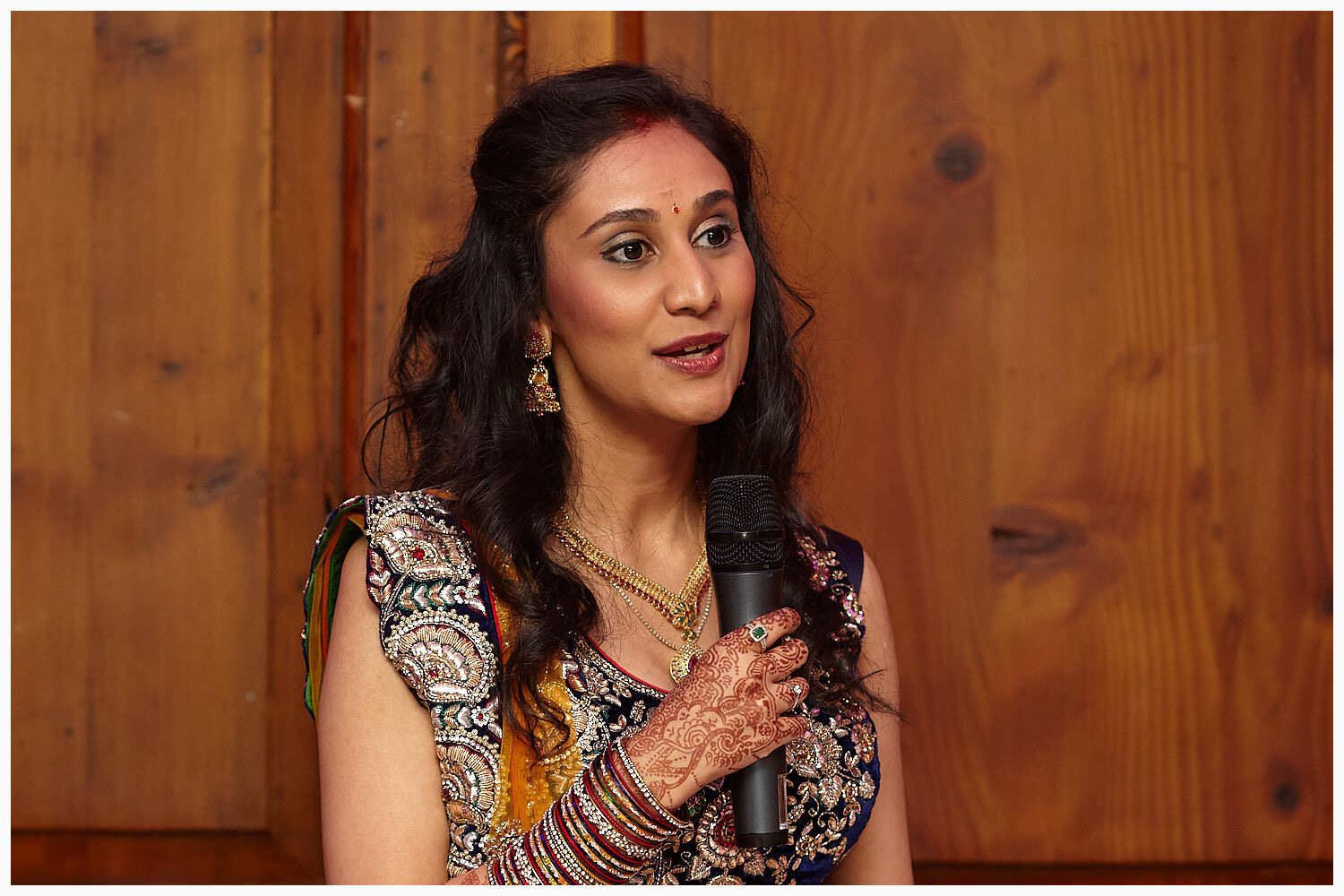Hedsor House Taplow (Maidenhead) Buckinghamshire
Asian Hindu Wedding Photography
Please allow a few moments for the high quality photo files to load
A selection of photos featuring an Asian Hindu wedding at Hedsor House Taplow (near Maidenhead) Buckinghamshire
If you are planning a wedding do take a look at the Prices, the photo Galleries, the Videos, and the Albums
Great Short Duration + Short Notice + Micro-Wedding Discounts – Please Enquire
Bride awaits the start of her Asian Hindu wedding ceremony at Hedsor House Taplow near Maidenhead
Background Information and Highlights
Our bride and groom chose the beautiful Hedsor House Taplow Buckinghamshire for their Hindu wedding ceremony and reception.
Hedsor House has featured in many movies and TV features and no wonder - it is just so gorgeous in every way. Interesting varied interior features lovingly maintained to an excellent standard. Extensive colourful gardens brimming with features, mature trees, plus huge lawns running away into the quintessentially English home counties countryside.
Hedsor House is located just a stones throw from Maidenhead Berkshire and is easily accessible from the M4 and M40 motorways. There is plenty of free parking onsite.
The coverage started with our brides party a couple of days before the wedding day. Henna, dancing. All that might be expected. The weather on this summer evening let us down badly - it would have been so nice to venture outside but the rain was so heavy that might have risked drowning!
Moving on to the actual wedding day, there was a small informal civil wedding ceremony a few hours before the main Asian wedding, just to get the legal formalities out of the way. The registrars on duty from the nearby Beaconsfield Register Office were as always an absolute pleasure to work with.
Then it was time for the main event, the Hindu wedding ceremony. Plan A was to have the ceremony outside on the lawns but again the weather was not playing nice. In fact the weather snookered us time and again during the day with blustery winds and heavy downpours meaning that we were not able to make as much use of the grounds as we all would have liked. Oh well. So Plan B it was - the splendid main hall inside Hedsor House and that worked great. So photogenic!
Also see these Hindu weddings: Peter’s Windsor Racecourse, Peter’s Southall + Baylis House (coming very soon)
See lots more wedding photo galleries including e.g. Peter’s Cliveden, Peter's Burnham Beeches Hotel, Peter's Grovefield House Hotel, Peter's Guildhall Windsor, Peter’s Windsor Racecourse (Hindu Wedding), Peter’s Old Luxters Barn, Peter’s Hunton Park, and many more.
Hedsor House is breath-taking scene both inside and outside!
The gardens are beautifully maintained and are an ideal backdrop for your must-have photos
The room set up for the Hindu wedding ceremony
The father of the bride organised a big party the day before the wedding day at his huge and luxurious home
Naturally henna was featured in the arrangements during the evening
Peter shot a lot of semi-formal group photos at the party at the request of the father
Lets hope this meal did not spoil the appetites of the guests for the next big day!
The young lady guests performed some dances at the party
And now the bride and groom arrive for their big wedding day
There was a small civil wedding ceremony before the main event - the Hindu ceremony
We shot some portraits as best we could but had to fight strong winds and heavy rain - we jumped outside between the showers
The groom arrives - again - this time with his mum
The bride finished her “getting ready” in the gorgeous stately rooms upstairs
“Reportage” photos are usually the most popular style but many like to have some impromptu semi-posed shots as well
The little people are always great subjects for the photos!
This is a very small selection of the approximately 1200 photos that Peter supplied
We just about managed this big group photo before the rain drenched us
What Happens In A Hindu Wedding Ceremony
If you are a guest or a professional photographer or videographer who has not attended a Hindu wedding ceremony before you may be wondering what to expect. See this information for a full description of the various events. There can be many variations in Hindu wedding ceremonies.
Don't expect all these events to take place or to take place in this exact order. The first rule of Asian weddings is: there are no rules!
Typically Asian priests and celebrants are much more relaxed regarding the activities of guests and hired photographers and videographers than their Church of England colleagues. But if you are a guest please try not to block the viewpoints of the photography and video crews!
Hindu Wedding Ceremony
A Hindu wedding is a sacred bond that unites two individuals as one and is performed in accordance with the Vedas, the Hindu scriptures, which are at least 4000 years old. The ceremony is a collection of rituals that the bride and bridegroom perform together with their family and friends. The five elements: earth, water, fire, wind and space are invoked as a manifestation of the Supreme Lord to witness their holy union. The rituals, the Vedic incantations and the customary routines that constitute the ceremony are vital and are designed to ensure happiness, prosperity and harmony. It is an occasion of joy, splendor and color and an expression of the warmth and friendship between the two families.
In the marriage ceremony, the bride and groom represent the Goddess and the Lord Shiva. So they sit on a stage called the ‘Manavarai’ (Mandap), which is elevated above the guests. The ceremonial area is a holy ground. Marriage is a step in the spiritual evolution of the human soul and for this ceremony heavenly hosts Shiva, Parvathi, Agni (the sacred fire) and the spirits of the ancestors are invoked as witnesses and sponsors.
Welcoming guests:
Guests are welcomed by applying the sandalwood paste and red saffron (KUNKUMAM) on their forehead with sprinkling of rose water.
Welcoming the Bridegroom:
The Bridegroom arrives at the wedding hall accompanied by the best man with Nadhaswaram (south Indian musical instrument) music. At the entrance, bridegroom's feet are sprinkled with water and the sprinkler in return receives a gold ring as sign of gratitude. Bride's family welcomes bridegroom and bride's father garlands bridegroom. Then, two ladies perform ‘Aarathi’, the rotation of a tray carrying banana wick lamps and apply kunkumam. Bride's mother sprinkles rose water. This is done to ward off the evil eye. Then bridegroom is escorted to the ‘Manavarai’.
Sangalpam:
The Brahmin priest gives holy ash and a ring made of special grass (Thetpai) to bridegroom and best man and starts the rituals.
Ganesh Pooja:
The priest starts by offering a prayer to Lord Ganesh invoking his blessings for the wedding to take place without any problems, purify the environment and give spiritual protection to the couple and the congregation. (All poojas begin with the prayer to Lord Ganesh because he dispels ignorance and remove obstacles.)
Sowing Nine Grains (Palihai):
Five, seven or nine women representing both families sow nine varieties of grain in an earth ware pot, signifying a blessing of fertile life for the couple. The priest gives fruit and flower on a betel leaf to the bridegroom's mother and she gives to the ladies.
Tying Kaapu:
While the groom’s uncle breaks the coconut, the priest ties a saffron thread around groom's wrist signifying the removal of obstacles and the commitment of the groom.
Welcoming the Bride (first entry):
Bride enters the hall accompanied by her maid of honor (Tholi), bridesmaids and her family. She takes her place at the Manavarai to the right of the groom and goes through the same rituals as the bridegroom.
Navagraha Pooja:
This pooja is conducted to appease and invoke the blessings of the nine holy planets.
Shiva Parvathi Pooja:
The priest performs this pooja, which signifies the couple represents Lord Shiva and Goddess Parvathi and it is like their grand wedding(Thirukalyanam) Next, bride and groom light the holy fire (Homam), this is a sacrificial prayer to Agni (God of fire), in order to witness their union and purify their bodies through thought and action.
Kanyadaanam:
The bride and groom’s parents greet each other by applying sandalwood paste and kunkumam on each other’s forehead and sprinkling scented water and exchanging gifts. The priest calls on three generations of male ancestors of the bridegroom and the bride, Again the universal witness and all present, seen and unseen, to bear witness and bless the couple. The bride’s father places the hand of bride in groom's hand. The bride’s mother indicates her consent by pouring water in the hands of her husband, who holds a gold sovereign symbolizing his daughter. Groom accepts the sovereign and then gives it to his parents. This symbolizes the acceptance of the bride by the groom and his family.
Blessing of the Bridal Saree (Koorai) and Thali in Bridal Necklace:
The priest and the parents bless the tray containing the wedding Saree, Thali and other adornments. Groom's relatives present the tray to the guests for their blessing. Once this is done groom will then hand this to his bride. Then bride leaves the Manavarai to change into the Bridal Saree.
Thali Pooja:
The priest consecrates the Thali by placing it on a Khumbam in which the Goddess Lakshmi is invokes and performs a Pooja seeking her blessing. The Khumba is a brass pot of water with a coconut and mango leaves placed on it, representing the physical form of the deity. The Goddess Lakshmi represents wealth and prosperity.
Return of the Bride:
Bride returns to the Manavarai with maid of honor and her family in her Koorai Saree carries a garland. Bride garlands bridegroom and takes her seat next to him.
Thiru Mangalyadharanam (Thali Ceremony):
This is the highlight of the wedding. The Thali (mangalsutra) consisting of a gold ornament strung from a yellow holy thread with the gold necklace. The priest consecrates the Thali and groom's father gives it to groom. While his relation breaks the coconut, groom ties three knots of the holy thread with Thali around bride’s neck and they become man and a wife. This symbolizes commitment, safety and security offered to the bride by the groom as he asks her to share in a long and happy married life with him. A crescendo of Natheswaram & Thavil (South Indian musical instruments) music and a shower of flowers and yellow rice (aruharisi) from the congregation accompany this.
Groom will move to the right hand side of bride, as according to Hindu mythology Lord Shiva has his consort Parvathi on his left. Groom places a streak of vermillion (Sindur) on the forehead of his bride and on the parting of her hair, signifying her status as a married woman. The couple then exchanges garlands three times.
The Seven Steps (Sapthapadi):
This is an important part of the ceremony, where the priest proclaims the marriage as sealed and unbreakable. The bride and groom holding their hands and take seven steps around the sacred fire, which denote the following marital vows.
Seven Steps / Vows in the Hindu Wedding Means:
1. The couple takes the first step and promises that they will takecare of each other and pray for abundant blessings and prosperity in their life.
2. In the second step, the couple promises and prays to the Gods tobless them with physical and mental powers and lead a healthymarried life.
3. During the third step, they promise to protect and increase their wealth by proper means.
4. With the fourth step, the bride and the groom pledge to share happiness and sadness together.
5. With the fifth step, the couple promises to be responsible and care for their children.
6. The sixth step is taken by the couple to be together always.
7. And while taking the last seventh step, they promise to be truthful and trustworthy to each other and pledge to be united always in friendship and harmony.
Walking around the Sacred Fire:
During the first circuit groom places bride’s foot on a granite stone (asymbol of strength and integrity) and puts a silver ring on the second toe of her right foot. During the second circuit, he repeats the same procedure with her left foot and points the couple to the constellations of the Pole Star (Dhuruva) and its own twin Aruntathi (known for her virtuous, chaste and devotion to her husband sage Vashister). During the third circuit, the couple retrieves a ring from the bottom of a vessel filled with water. It is an enjoyable game to promote sharing. At the end of this circuit, the couple offers grain, honey and fruit to the Gods by placing them in the Sacred Fire.
First Feeding:
Fasting couple will feed each other with a mixture of honey, yoghurt, ghee, milk and fruits whilst the priest utters respective mantras. This symbolizes the mutual sustenance of the couple required of the marriage to succeed. This is done behind curtain to symbolize the importance of privacy.
Blessing:
The priest blesses the couple first, showering them with yellow colorrice, which symbolizes prosperity and happiness. The parents of the bride and groom then bless their children in the same way followed by close family. Members of the congregation bless the couple and the ceremony concludes when Aarthi (the rotation of a tray holding banana wick lamps) is performed for the couple.




































